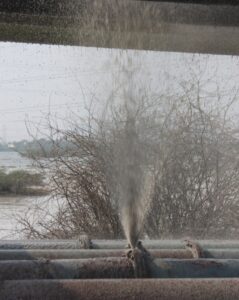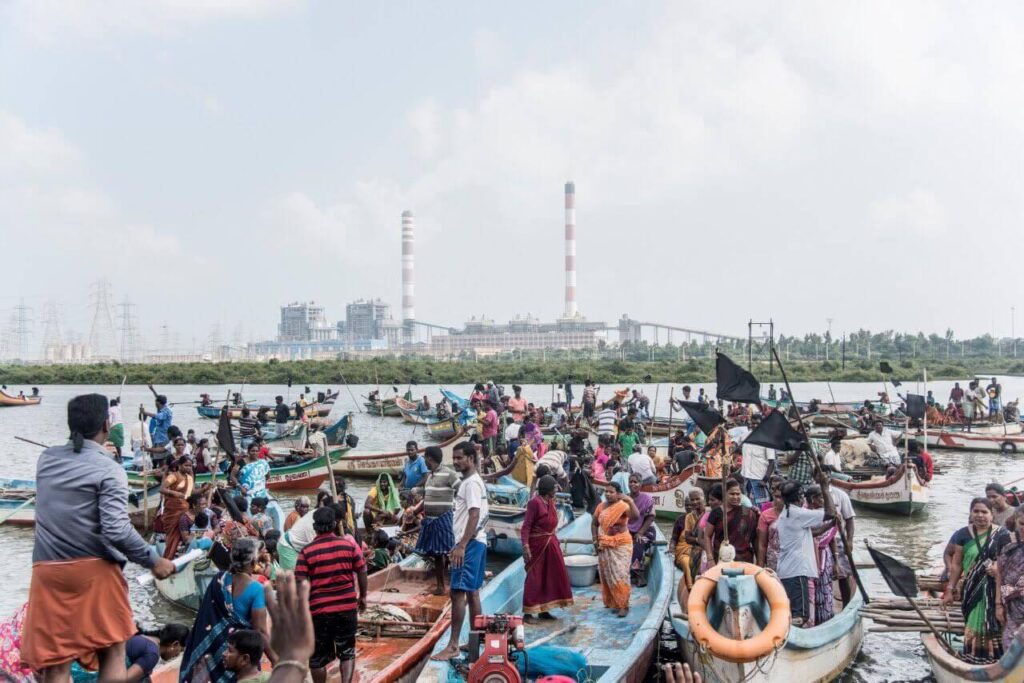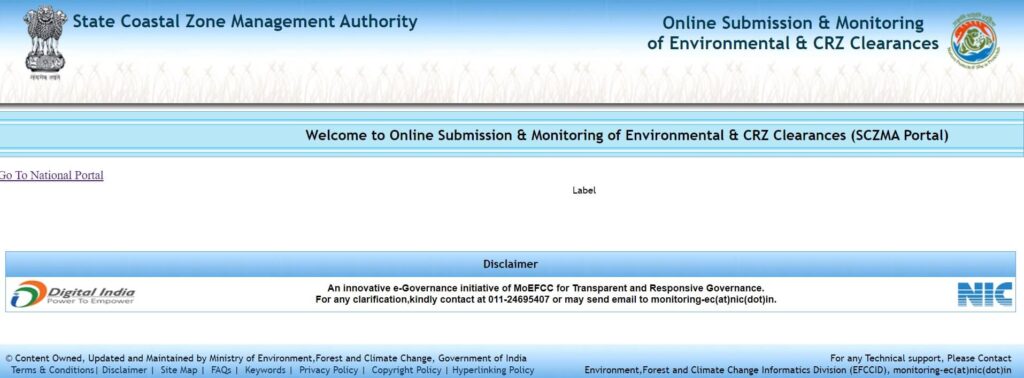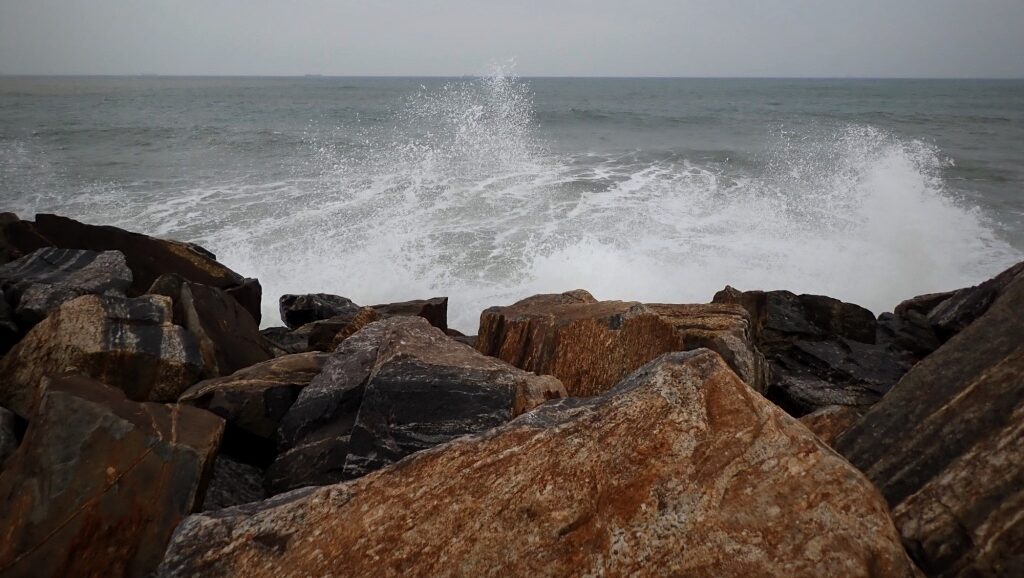That environmental violations are rampant along Indian coasts surprises no one. It is however deeply disturbing to see infractions being normalized by the regulators themselves. In a daring effort to regularize illegal projects along the coast, the Ministry of Environment, Forest and Climate Change (MoEFCC) issued an Office Memorandum (OM) on 19th February 2021.
The OM stated that the MoEFCC had received requests from state governments to consider granting clearance under the Coastal Regulation Zone (CRZ) Notification, for a class of activities called “permissible activities”, which had already commenced work without obtaining prior clearance. The OM claimed that such projects that had started work without clearance (what are also known as ‘violations’ in common parlance) had done so due to “inadequate knowledge of regulatory regime and other factors”, and could apply for a “post-facto” clearance.
This OM was set to be a game-changer in the history of environmental clearances. For example, an iron smelting plant or a resort that had already started construction and operations in a CRZ area without bothering to obtain clearance would normally be considered a violation under the Environment (Protection) Act (EPA) of 1986, under which the CRZ Notification is issued. However, under the new OM, these violators need only apply for this “post-facto” (literally ‘after-the-fact’, but more as an afterthought) clearance, and get regularized with a neat clean chit.
The OM has been challenged by environmental organisations and has been put on hold by both the Madras and Bombay High Courts. Close on the heels of the United Nations IPCC Working Group 1 Report on Climate Change which predicts serious threats to global shorelines, especially Indian cities, it is vital to inspect how India’s dedicated coastal environmental law has treated violations of its own clauses.
A Timeline of the CRZ’s Shifting Views on Violations
The Coastal Regulation Zone (CRZ) Notification was first issued in 1991 under Section 3 of the EPA, 1986. It was amended about 25 times before being replaced by an entirely new notification in 2011. Throughout the 1991-2011 period, only when cases were filed against violators was any action taken at all. Despite calls from various civil society organisations, the (then) MoEF did not undertake any comprehensive review of violations or follow-up actions.
In 2014, following requests by the state governments, the Shailesh Nayak committee was constituted by the MoEFCC to review the CRZ notification for ‘procedural difficulties’. Environmentalists have pointed out severe flaws in the processes followed by the committee. For example, the entire review process was conducted behind closed doors and hidden from public scrutiny, which is against the acknowledged ethos of public consultation and engagement that the CRZ attracted. What followed was a series of 14 amendments to the Notification, each throwing open the coasts to reclamation, industrialization and the interests of resorts and hotels. These changes allowed the law to be diluted giving additional leeway to violators. Like the most recent OM, one amendment dated 6th March 2018, allowed a window of application for post-facto clearance to activities operating without a CRZ clearance.
The 2011 CRZ notification was superseded by the 2019 notification which incorporated all the previous amendments, besides further diluting the law. This new notification was pushed through by the NDA government despite receiving over 3000 objections from various fishing unions, environmental groups and individuals across the country. In the entire process, the only stakeholders consulted were the state governments.
How the CRZ Zones Work
While the Coastal Regulation Zone notification does not impose a blanket ban on activities in coastal areas, it attempts to protect coastal areas by keeping a check on unregulated development. At present, its jurisdiction is all along the Indian coastline, from the High Tide Line (HTL) of the sea to a 500m limit on the landward side, the area between Low Tide Line (LTL) and HTL (also called the intertidal zone), and the water area from the LTL up to 12 nautical miles seaward. Additionally, it extends to estuaries, creeks, rivers and water bodies under the tidal influence of the sea and the land adjacent to these water bodies.
Under the regulation, coastal areas have been classified into four zones. According to the latest CRZ 2019, eco-sensitive areas and intertidal zones receive the highest degree of regulation and fall under CRZ I A & B respectively. If you live near the coast and know of a mangrove or swamp area in your neighbourhood, you can assume that the region falls under CRZ I A making it a ‘No Development Zone’. CRZ III areas are ‘relatively rural areas’ and receive slightly lower levels of protection and regulation. Depending on the population density, it is further divided into CRZ III A or B. CRZ III areas have a ‘No Development Zone’ limit as well. CRZ II consists of urban areas and receives the least level of regulation. The CRZ IV is the water area.
While the CRZ’s jurisdiction seems straightforward, in reality, telling one zone from another is a nightmare, largely on account of the fact that successive state governments and the MOEFCC have failed to ensure that we have in place the legally mandated Coastal Zone Management Plans (CZMP).
The CZMP Conundrum
Every maritime state of India is supposed to have made its Coastal Zone Management Plan, which is approved by the MOEFCC and followed strictly while deciding where any activity is to come up. The CZMP is an important tool to identify violations along the shoreline and to ensure its protection. For this, the correct demarcation of the HTL, LTL, 500 m line and the four zones is crucial. Hence, it is necessary to know which year’s baselines are to be used. “The CZMP is the backbone of the CRZ notification. Enforcement of the CRZ is possible only if there exists a robust plan with the lines, zones and activities permitted. Else, the notification is just a farce.” says Pooja Kumar, coordinator at Coastal Resource Centre, Chennai, which has been closely following violations in the city.
In the first place, it took a Supreme Court ruling in 1994 (ICELA v Union of India) to force state governments to create their CZMPs, which they submitted only in 1996. The first set of CZMPs, besides getting conditional approval from the MoEF in 1998, were physical, hand-drawn maps of low resolution in many states. For states such as Tamil Nadu, the maps were kept out of the public domain and released only in response to an RTI petition filed by Jesu Rathinam, an activist with Coastal Action Network, and Director, SNEHA Nagapattinam, soon after the 2004 Indian Ocean tsunami.
The CRZ 2011 notification called for entirely new CZMPs to be created with little clarification on the baselines to be used for the HTL and other important lines, which themselves had shifted in many areas, particularly after the 2004 tsunami and gradual coastal erosion as seen in parts of coastal Odisha. Nonetheless, the states continued to delay the preparation and approval of these maps. After four extensions, the National Green Tribunal (NGT) ordered a stay on the appraisal of projects until CZMPs were ready. In the meantime, seeing that projects worth crores were on hold, the central government pushed forward the CRZ 2019 notification to neatly wipe out both earlier draft CZMPs, create new baselines, and erase any violations in the process.
Without CZMPs under the 2011 notification in place, the Centre pushing forward an ambiguous new [CRZ] notification indicates that the MoEFCC is working in tandem with the states to regularize violations
—Stalin D, Director, Vanashakti
CZMPs prepared by the Tamil Nadu authorities under the CRZ 2011 notification were accused of being incomplete and inaccurate. They have been quashed by the Madras High Court and the concerned authorities have been directed to reprepare the maps. Tamil Nadu, hence, still awaits approved maps under the CRZ 2011 notification. The hand-drawn maps created in 1996, based on the CRZ 1991 notification (which authorities are now mandated to refer to as baselines) are not error-free either. Reports suggest that certain maps have important eco-sensitive areas missing altogether. This is evident in the controversy over the depiction of the Ennore Creek CZMP, an eco-sensitive zone in Tamil Nadu. “The original 1996 map was never used for the appraisal of projects,” says Pooja. “Instead, a fake map that erased the creek was created and used, due to which more than 1000 acres of wetlands have been lost to industrial development. The manipulated map has been used to regularize violations such as petroleum and coal storage plants, bridges and pipelines in the region.”

With CZMPs being the cornerstone of the CRZ regime, their accuracy is central to its efficient enforcement, the decision on what constitutes a violation, and the protection of shorelines. From keeping maps out of the public domain to opening highly erroneous and incomplete draft maps for public consultation, it appears as if deliberate attempts are being made by authorities to gloss over violations. “At the 64th meeting of the Tamil Nadu CZMA, a decision was taken to map all the coastal violations in the state. However, no such attempt has been made yet. This very act depicts how authorities try to gloss over facts” comments Pooja.
While the CZMPs remain contested, project approvals are continuing on an ad-hoc basis using individual maps provided by the project proponents. With no proper CZMPs in place, poorly conducted CZMA meetings, and virtually no field-vetting or monitoring, it is very easy for project proponents to tweak zones and lines in their favour. After all, few local people are informed of such plans until they are cleared, or worse even, till the construction begins. Besides creating inroads for unwarranted violations, this ad-hoc process of zonation makes it difficult to track violations.
So what happens to past violations?
The new CRZ 2019 notification makes absolutely no reference to past violations and is silent on the action to be taken against violators. While the regulatory provisions of the law have themselves been extremely diluted, completely eliminating certain clauses and modification of others makes one wonder whether the plans themselves are not on shaky grounds, but also if previous violations are now ‘regularized’.
For example, while the former notification specifically mentioned that salt harvesting and desalination plants were not to be set up in eco-sensitive intertidal zones, the new CRZ 2019 notification makes no mention of eco-sensitive intertidals. It also eliminates the need for Social Impact Assessments (SIA) for the setting up of desalination plants. One wonders about plants previously set up in eco-sensitive intertidal areas, without an SIA. Are they no longer in violation?
The CRZ 2011 notification made the drainage of sewage and waste in all the zones illegal and declared a date by which defaulters had to phase these activities out. Industries that did not phase out by the declared date would be considered as violators of the law. The new notification has completely eliminated this provision. Neither has it specified a phase-out date nor has it prohibited the discharge of waste in the CRZ areas. One wonders what happens to violators now and whether this was the entire raison d’etre of this new law.
The CRZ 2019 has allowed for land reclamation from the sea for ‘strategic projects’. “The phrase ‘strategic projects’ definitely provides additional leg space to violators,” Stalin comments. Reclamation projects that could be violations can now be regularized under the garb of ‘strategic projects’ if the proponent has the lobbying power. The February 2021 OM came as a final blow — an open invitation through a backdoor entry for violators, that perhaps has only temporarily been stalled by the courts.
Stemming the tide of new violations through people’s participation
There is no doubt that the 2019 CRZ notification has smoothened the path for legions of violators by severely diluting the regulatory and application processes itself. The text of the 2019 notification, the fraught CZMPs, and circulars such as the Office Memorandum of February 2021 stand testimony to the regulator’s bleak commitment to coastal protection in the face of climate change-induced sea-level rise and coastal disasters. Judicial processes, on the other hand, have offered some signs of hope.
As per the direction of the Madras High Court in a matter concerning the state’s problematic CZMP, the court directed that the CRZ 2019 notification shall not be enforced until complete CZMPs are prepared and approved as per the provisions contained in the CRZ 2011 notification. The CRZ 2019 notification has itself been challenged by a number of organizations in both the Bombay High Court and the Bombay High Court at Goa. Stalin of Vanashakti, one of the petitioners in the Bombay High Court case, is upbeat; “the arguments of the case are strong and I am more than just hopeful that the new notification will be revoked,” he says.
Aside from judicial processes, a stable source of hope for coastal protection over the last three decades has been civil society action and awareness on coastal issues. A distinctive feature of the CRZ 2011 notification from the previous 1991 version was that it called for the constitution of District Level Committees (DLC). This feature was a hard-won provision that was granted on the basis of demands by fish worker groups; representation from at least three members from fishing communities was mandatory on the DLC. However, most states never bothered to constitute the DLCs despite repeated petitioning.

Local representation in DLCs as mandated in the 2011 notification could have been channelled to track down violations and illegal structures. “This representation is important as the knowledge of the land rests with locals… violations have the potential to affect their livelihoods, which depend on these lands,” laments Pooja about a lost opportunity. The current 2019 notification, however, does not do away with this provision.
The constitution and proper functioning of the DLCs will help in bringing to light violations. Community monitoring and vigilance is indispensable and has ensured that coastal commons are prevented from alienation. Collaborations between coastal communities and environmental organizations to understand and use the provisions of the law will ensure that violations are effectively tracked, and vulnerable coastal spaces are protected.
With such growing grassroots collaborations between people and the useful deployment of digital technologies, transparency can be ensured, helping the State Coastal Zone Management Authorities maintain a public record of violations and the action taken on a dedicated website (as is mandated by the notification).

As in the 1990s, a combination of judicial and civic action is attempting to salvage India’s coastal regulatory spirit. This time, India’s coasts need protection from the regulators themselves.
Featured image of a stone breakwater wall installed in 1962 in the port town of Paradeep in Odisha taken by Anvita Dulluri. The disruption of natural beach defences in the wake of construction and population growth can adversely impact a coast’s susceptibility to erosion during cyclones, as Anvita finds in her photo essay “Shifting Sands: The Story of Adapting to Rising Sea levels in Odisha”.
Views expressed are personal.







Mahabal Enviro Engineers Pvt. Ltd. provides environmental consultancy, testing and analytical services, calibration services, legal consultancy etc.For more details visit https://mahabal.com/
[…] How CRZ Violations Are Being Regularized Instead of Regulated Across India’s Shoreline […]